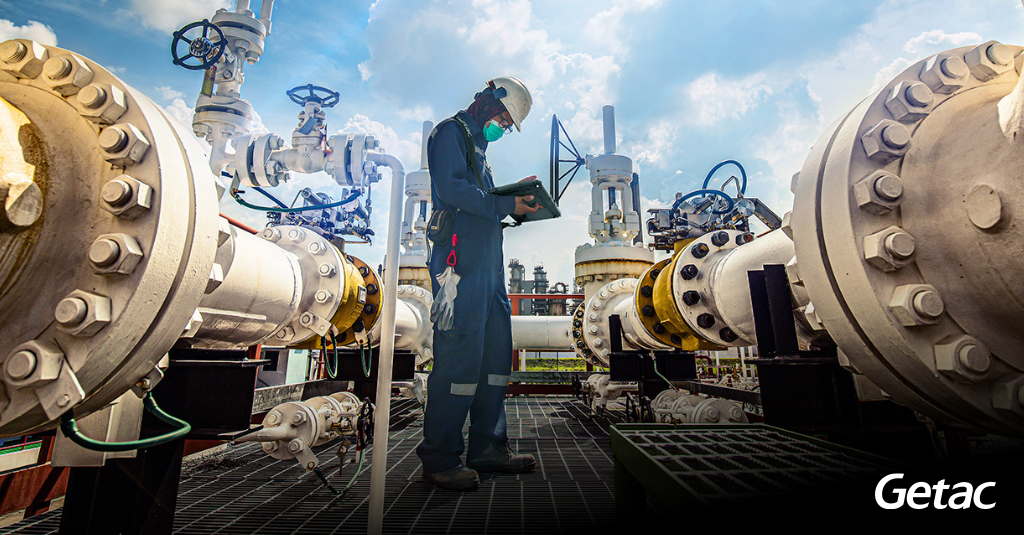By Frank Baldrighi, business development manager, Getac
Automation has long been a driving factor in increased efficiency by replacing the human burden of manual, dangerous, or heavy work with machines. Since the industrial revolution, automation has been making industries safer and more efficient. This trend continues today, with businesses across various industries deploying smarter, digital technologies to automate more processes, even those that may have traditionally been considered the sole domain of people. However, unlike other historically labour-intensive fields, the oil and gas industry continues to play catch-up with technology.
DNV GL’s latest oil and gas services forecast indicates that the industry will be heavily automated by 2050.[1] However, today’s market sees only the largest oil and gas companies employing automated drilling technologies or automated surveillance of rigs and fields or operations to measure pressure and oil flow.
In the near future, it’s likely that every aspect of exploration and the production chain could be automated. Right now, oil and gas organisations can use rugged mobile technologies to detect hazards, manage repairs, or make operational decisions, leaving strategic thinking to their human counterparts.
Automation provides significant benefits to an organisation, which include:
- delivering organisational cost savings through streamlining processes and procedures across the production chain
- reducing errors when analysing valuable data, enhancing corporate analysis and decision-making abilities
- creating a more connected and controlled environment when combined with mobile technology, connected sensors, or data visualisation equipment
- reducing human interaction with difficult-to-access or dangerous machinery to perform risky tasks
- enhancing the availability and quality of communication and collaboration, leading to faster and more accurate decision-making that powers organisational growth.
Current in-market examples of automation via rugged devices are already delivering benefits across the oil and gas industry.
For example, automating portions of the drilling process improves staff safety, while also speeding up the overall procedure. Similarly, underwater automated drones can carry out a range of inspections on seabed infrastructure and transmit data to a central command post, creating greater efficiency and reducing the need for skilled divers. This also improves staff safety by not requiring divers to carry out inspections in unfavourable conditions.
In a weather-dependant industry, weather monitoring equipment can also be used to detect weather patterns and provide warning signs for precautionary measures to be taken. The installation of smart sensors has seen the rate and flow of oil and gas become more regular, without the need for additional onsite crew and specialists.
Although there are many benefits for those in the oil and gas industry to begin the automation process, challenges may arise for those looking to take the first steps.
The most obvious of these challenges is the unfamiliar territory that comes with implementing automation across legacy programs. This requires companies to adapt their in-house training and may trigger cultural resistance from team members who aren’t ready to change. However, by being open to embracing new professional skills, those currently working across oil and gas will be able to prepare for future progressions across the industry. By futureproofing their skills while the organisation futureproofs its operations, these workers can continue to contribute to the organisation in meaningful ways.
The current automation drive in the oil and gas industry is paving the way for future developments. Blockchain in particular could bring huge benefits to downstream operations. This technology could provide greater control over everything from scheduling equipment maintenance to managing exploration records, providing a secure, transparent, and unalterable record across all aspects of the organisation. Successfully implementing blockchain technologies may be able to reduce back-office staff workloads and increase cost savings in the future.
Similarly, automated rigs and field production machines that will be able to run with minimal human interaction will also deliver savings. The automation of these locations through in-field devices and smart sensors will increase the quality, timeliness, and accuracy of communication between operations and control centres. This will create a new environment for workers to encourage problem-solving, creativity and innovation, ushering in a new wave of technology-based employment opportunities.
[1] https://eto.dnv.com/2017/oilgas
